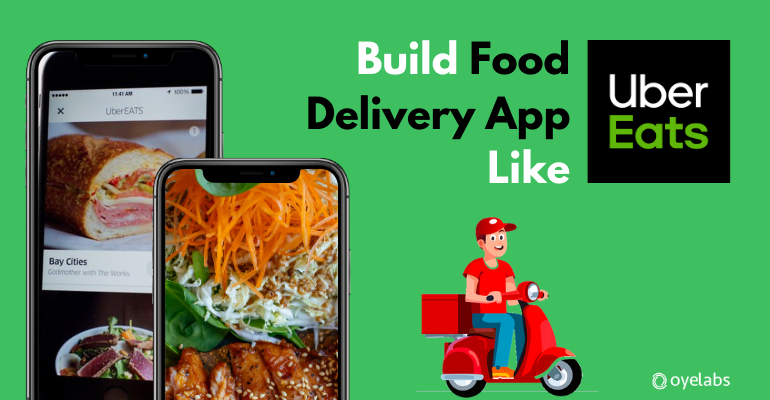
The food delivery industry has seen explosive growth in the past few years, driven by growing demand for effortless on-demand services. With platforms such as UberEats and DoorDash revolutionizing the way people request meals, the emphasis has shifted to creating cutting-edge food delivery apps. These apps provide users the option to order food from their favorite restaurants and have it brought right to their location. For businesses, the task is to leverage technology to improve delivery logistics and ensure a smooth customer experience.
Building the Perfect Food Delivery App
Creating a profitable food delivery app demands a thorough understanding of the industry shifts and business models that dominate the sector. Whether creating a full-stack delivery solution or concentrating on niche areas like virtual restaurants or cloud kitchens, the app’s features needs to cater to both customers and restaurants. Essential elements such as order tracking, efficiency improvement, and user satisfaction indicators play a critical role in ensuring user retention.
Restaurant Delivery Partnerships: A Winning Strategy
Eateries are progressively establishing collaborations with delivery platforms to increase their market penetration. These agreements help restaurants cater to a larger audience while minimizing the challenges of running their own delivery operations. The success of such collaborations depends on technological synchronization, which boosts the user interface design and improves the customer experience. Through these collaborations, restaurants can boost customer loyalty and ensure that they stay relevant in a saturated market.
How KPIs Drive Food Delivery Profitability
For any enterprise, knowing its performance metrics is essential to ensuring profitability. In the food delivery sector, KPIs such as time efficiency, order accuracy, and user happiness are essential. Measuring and optimizing these KPIs allows delivery services to offer a better customer experience. Additionally, keeping an eye on financial success helps companies streamline operations, reduce charges, and improve overall effectiveness.
Customer Satisfaction and User Retention Strategies
A significant element in the growth of food delivery platforms is their ability to keep customers through outstanding customer service. Offering fast food delivery and resolving customer reviews quickly can assist companies improve their service offerings. In addition, introducing loyalty programs and offering incentives like no-cost delivery can increase user retention. User happiness can be additionally bolstered by maintaining quality assurance and offering a smooth processing system.
The Role of Technology in Food Delivery
Technology is at the core KPIs for Food Delivery of modern food delivery solutions, enabling companies optimize their operations and deliver a smooth customer experience. From app creation to real-time delivery tracking systems, technology plays a critical role in the success of delivery platforms. The application of data analytics to understand customer demographics and preferences allows delivery services to offer customized experiences, furthermore enhancing user engagement.
Competitive Analysis in the Food Delivery Market
The delivery sector is highly competitive, with many players vying for market share. Conducting a market evaluation enables companies to assess their standing in the market and spot opportunities for expansion. Delivery platforms must differentiate themselves by providing unique features such as ghost kitchen services, quick service, or niche cuisine options. Understanding sector dominance and customer actions enables companies to tailor their services and remain ahead of the rivals.
The Impact of the Pandemic on Food Delivery Services
The COVID-19 pandemic has had a profound impact on the food delivery industry, boosting its expansion as consumers turned to on-demand apps due to social distancing measures. The shift has highlighted the importance of technological evolution in the culinary sector, with restaurants rapidly adopting online food ordering and delivery apps. As the world adjusts to new normals, food delivery businesses must continue innovating to meet changing consumer demands and ensure business growth.
Investing in Food Delivery Startups
The delivery sector presents numerous startup opportunities, with investors keen on backing companies that offer innovative solutions. From developing similar platforms to building niche delivery apps, business owners have a range of paths to pursue. Investors seek out strong operation plans and the capacity to grow, particularly in areas like delivery network optimization, user experience (UX), and technological advancement. By concentrating on these sectors, startups can attract significant investments and establish themselves in the industry.
Enhancing Food Delivery Service Profitability and Expansion
Growing a food delivery business demands a strong base built on market penetration, cost models, and service differentiation. As local delivery services grow, businesses should focus on creating a dependable logistical system and maintaining food safety. Furthermore, widening the menu offerings, forming new restaurant partnerships, and adopting advanced technology in food delivery will drive further expansion. By continually optimizing delivery times and guaranteeing high customer satisfaction, View More Information companies can sustain a market lead and boost revenue generation.
These topics offer a comprehensive understanding of the service landscape, with a focus on key areas that propel the industry forward. Whether whether you are a new company or an established company, concentrating on these areas will help you succeed in the competitive world of food delivery.